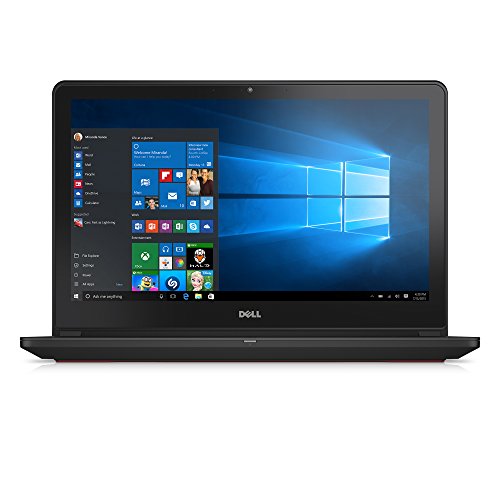The Best Laptop for College in 2023: Could It Be a Tablet?
By Publisher
| Last Updated January 25, 2023
Choosing the best laptop for college gets trickier every year. As technology changes and computer manufacturers develop new ways to help students work effectively, the dizzying array of options can be overwhelming. With all the new devices available, it can be challenging to figure out which is the best laptop for college students in 2023.
Before you part with your hard-earned cash, you need to consider your options carefully. First of all, do you need a laptop for college? Maybe what you're looking for is the best tablet for college students. Or even the best 2-in-1 laptop. It all depends on your individual needs.
The first step in choosing any computer is figuring out how you will be using it. Will you mainly be doing online research and in-class note-taking, or do you expect to be building multimedia projects and streaming movies? Does it have to be portable, or will it stay in your dorm room? How much battery life do you need? Is a full-size keyboard important to you?
If you know which school you will attend and what program you will take, some of these questions may already be answered for you. Many programs have specific hardware or operating system requirements for student devices, so be sure to check. Some majors allow tablets; others require laptops. Sometimes a tablet that goes to and from class can supplement a stay-at-home laptop; sometimes a 2-in-1 can do the job.
Ultimately, the best device is the one that works best for you. The information in the following sections can help you figure out what that might be.
- Laptops vs. tablets vs. 2-in-1s
- 8 things to look for in a device
- 5 common technology buying mistakes
- The best devices for:
- How to find discounts on laptops or tablets for college
This article contains affiliate links. We are compensated with a small commission, at no extra cost to you, for sales made through the links.
Laptops vs. Tablets vs. 2-in-1s
 It's no secret that college students love their technology. In a 2020 survey, over 53 percent of college students reported using some form of digital technology for over 50 hours in a typical school week. But to choose the best device, you need to understand the basic types.
It's no secret that college students love their technology. In a 2020 survey, over 53 percent of college students reported using some form of digital technology for over 50 hours in a typical school week. But to choose the best device, you need to understand the basic types.
Laptops
Laptops come with physical keyboards and generally have larger screens and more storage space than tablets. They are typically more powerful than tablets, which means they're better at handling processing-intensive programs like Photoshop. They are also better suited for multitasking because of the relative ease of having more than one window open at the same time. And they are extremely popular in college classrooms. According to a 2019 article in PCMag, about 81 percent of college students use laptops for schoolwork.
Tablets
Tablets are lighter and thinner than laptops and are thus much more portable. Their smaller size and lack of an attached keyboard mean they're well-suited for tasks like surfing the web and reading e-books. Tablets tend to have longer battery life than laptops. Many can be paired with wireless keyboards or styluses, adding to their usability. However, they usually cost more than laptops.
2-in-1s
You get a bit of both worlds with 2-in-1 computers, also known as hybrids. They have touchscreens like tablets and physical keyboards like laptops. Depending on the model, the keyboard either folds out of sight behind the screen or detaches entirely. Some hybrids have processing power that rivals traditional laptops, though most have less storage capacity than traditional models. And convertible hybrids (where the keyboard remains attached but folds away) tend to be bulkier and heavier than a traditional tablet.
8 Things to Look For in a Device
 It's easy to get lost in the descriptions of each computing device without really knowing what you're buying or what you need. This section can help you sort through the jargon around different features and focus on what really matters to you.
It's easy to get lost in the descriptions of each computing device without really knowing what you're buying or what you need. This section can help you sort through the jargon around different features and focus on what really matters to you.
1. Size
A laptop with a larger screen is easier to work with, but heavier to carry around. On the other hand, a tablet that fits in your pocket might be frustratingly small when it comes to typing notes. Generally speaking, a screen that's larger than 15 inches is too big to be portable. You'll have to decide how small is too small to use comfortably, but if you plan to use a tablet as a laptop replacement, get at least a nine-inch screen.
Your choice of major may dictate your screen size—for instance, engineering students who need a CAD workstation will need a laptop with a larger screen. Remember that weight is also a factor: Tablets are usually fairly light, but if you're going with a laptop, try to find one that weighs four pounds or less.
2. Display
The higher the screen resolution, the more detailed text and graphics will be. Most students will want a display that's at least 1920 x 1080 resolution (also known as "full HD," or 1080p), though some schools say 1600 x 900 is good enough. Film students or others who need to view high-resolution graphics might want to go with 3840 x 2160 (also known as 4K or UHD), but these types of screens cost more and are a bigger drain on the battery. If you plan to use your device to play games or watch movies, check that the display has a refresh rate of at least 60Hz for a smoother viewing experience.
3. Processor
Most new laptops come with eighth-generation quad-core Intel Core i5 or Core i7 processors. The more expensive Core i7 can speed things up a touch if you're doing video editing or 3D rendering. However, it won't make much difference to web browsing or word processing.
For most students, the Core i5 processor is a good choice. Core i7 makes sense for students who regularly run extremely demanding software, such as Adobe's Creative Suite. In general, Core i7 is better for multimedia consumption, high-end gaming, and scientific work.
The Core i9 processor is available on a few laptops. But for most students, it's not necessary to spend the extra money.
4. RAM
Random-access memory (RAM) is temporary memory that allows information to be stored and retrieved on a computer. More RAM doesn't necessarily mean your programs will run faster; it does mean you can run more programs simultaneously. You will generally need at least 4GB of RAM for laptops to work comfortably, though most schools prefer 8GB. Some majors that require heavy-duty multitasking require 16GB of RAM.
Some laptops let you add more RAM fairly cheaply and easily, so you might be able to upgrade an older machine. Other laptops have sealed bottoms or memory soldered right onto the motherboard, so upgrading the RAM is not an option.
RAM isn't as big a deal for tablets because of how they manage memory, but most come with anywhere from 1GB to 4GB of RAM. Hybrids and convertible tablets typically offer more, sometimes up to 16GB.
5. Storage
The internal memory is where your applications, documents, and media files live. Laptops use either a hard disk drive (HDD) or a solid-state drive (SSD). An HDD is a spinning metal platter with a magnetic coating that stores your data, while an SSD stores data on interconnected flash memory chips.
An SSD runs up to five times faster than a typical 5,400-rpm or 7,200-rpm HDD, making a huge difference to both start-up time and performance. Because it has no moving parts, an SSD is more durable and much quieter than an HDD. An SSD also uses less power, which makes for better battery life. However, an SSD costs a lot more and offers less storage capacity. Laptops that come with an SSD normally have only 128GB or 256GB of storage. In contrast, a 1TB HDD is not uncommon (and is usually much cheaper).
Many laptops come with USB ports that let you connect an external drive for more storage. Many colleges require students to have an external drive that's at least as large as the internal drive to back up data.
Tablets use flash memory for internal storage. Tablets with microSD card slots allow for expanded memory capacity. Those with USB ports can connect to flash memory sticks or external hard drives.
Keep in mind that cloud storage is an option for both tablets and laptops (and is the primary storage method on Chromebooks). You'll need Wi-Fi access to retrieve your files, but that shouldn't be too much of a problem on campus.
6. Ports
Depending on what you plan to do with your device, you may want to make sure it has some or all of the following ports:
- An HDMI or mini HDMI port lets you connect your device to TVs or other monitors.
- A microSD card slot can be handy if your device has limited internal storage.
- An SD card slot lets you transfer photos from a DSLR camera to your laptop or tablet.
- USB ports let you connect with a wide range of peripherals, from keyboards and mice to printers and external hard drives. Multiple USB ports can be useful (for instance, if you don't have a built-in SD card slot, you can use a USB port to connect to an external card reader), but some would argue that they are less important in a world of Bluetooth and Wi-Fi.
A note about USB: The standard USB port is USB-A, though the computing world is moving toward the newer USB-C standard. A USB-C port is much thinner and can fit on ultra slim devices. It also offers faster transfer speeds than its predecessors and can even be used for charging laptops. (Thunderbolt 3 and 4 ports, which can transfer multiple types of data at four times the speed of USB-C, use USB-C connections and cables.) The catch is that many peripherals still use USB-A connections, so you'll need an adapter to use them with a USB-C port.
7. Operating system
Some academic programs prefer a Windows-based machine, some require students to use a Mac, and some leave it entirely up to you. If you're free to choose, you have a number of options.
Windows 10 is the most versatile operating system. It has millions of applications and supports both touchscreen and desktop mode. Windows machines are generally more affordable than Macs and come in a wide variety of styles, from traditional laptops to tablets to 2-in-1s.
MacBooks run Apple's macOS operating system. iPads use Apple's iOS. These machines generally cost more than their Windows counterparts. However, MacBooks offer a powerful partnership of hardware and software, and they are less prone to malicious software. MacBooks can also run Windows via the Boot Camp utility, though you'll have to buy Windows separately. iPads can be paired with wireless keyboards, and iPad Pros can also be matched with styluses, meaning they can function as 2-in-1s.
Chromebooks are lightweight laptops that run Google's Chrome OS and are designed to be used while connected to the Internet. Chromebooks are cheap and easy to use (especially if you're already familiar with Google's suite of applications), and they offer exceptional battery life. Some new models even run Android apps. Keep in mind that many Chromebook apps won't work without Wi-Fi, and you won't be able to run full-featured versions of popular programs like Microsoft Office. (However, you can use programs such as Microsoft Word or Excel on many Chromebooks if you install a corresponding Office app on your Chromebook and you have a Microsoft account or Office 365 subscription.) A Chromebook might be a good option if your studying takes place online and doesn't require you to use Windows or Mac applications.
Android is Google's mobile operating system, but there is no uniform version of it. Many companies customize Android for different tablets, meaning you have plenty of hardware options. Make sure the tablet you choose has the version of Android that offers the features you want.
8. Battery life
If you plan to carry your device around campus with you, a long-lasting battery is important. Laptops that offer optional extended batteries can be a good option. Some laptops have power-saving features that let them go 10 hours or more on a single charge, though anything over eight hours is good.
Many tablets can go all day without recharging; don't settle for one that offers less than seven hours of battery life.
5 Common Technology Buying Mistakes
 Buying a new laptop or tablet can be a complicated undertaking. Being aware of the most common mistakes can help you avoid falling into that trap. Here are five of the most common errors people make when buying new devices:
Buying a new laptop or tablet can be a complicated undertaking. Being aware of the most common mistakes can help you avoid falling into that trap. Here are five of the most common errors people make when buying new devices:
1. Buying cheap
Everyone likes to save money, but the cheapest option is not always the best one when it comes to tech shopping. That's not to say that a $200 device won't suit your needs, but you need to be aware of exactly what you're getting. Cheap devices are more likely to have underpowered processors, lackluster battery life, or other trade-offs that limit their usefulness. If you know you're going to be editing film projects or creating detailed graphic designs, don't go for the bargain bin. Make sure you choose a device that can handle whatever you want to throw at it.
2. Paying for more than is needed
Be wary of buying cheap, but be equally wary of paying for features you will never use. New does not necessarily mean better. Most students (i.e., anyone majoring in areas like English, political science, or history) don't need expensive graphics cards or hybrids with detachable touchscreens, for instance. You might need the latest, most powerful technology if you need to run demanding software or are a hard-core gamer. But shop around and watch for sales before you commit to a major purchase.
3. Forgetting about connectivity
Are you a photography student who needs to download digital images onto your device? You might want one with an SD card slot. Do you need to share presentations with your class? An HDMI port might come in handy. Are you looking to sync your laptop or tablet with your phone? You might want the same operating system across all your devices. Think about the peripherals and the functions you might want to have later on before making your final decision about a device.
4. Focusing on only one spec
Sometimes people get so focused on one particular aspect of a device that they fail to consider its other characteristics. A laptop containing 1TB of storage space sounds great, but it might not help you if it comes with an outdated processor or sub-standard graphics capabilities. You need to look at the overall picture to make sure the device you choose will meet your needs.
5. Not futureproofing
There's a balancing act between meeting your present needs and preparing for what's coming in the next few years. Many colleges have minimum and preferred requirements; if your budget allows it, the preferred specs might be the way to go. There's a reason many colleges require you to buy the extended warranty on your laptop or tablet. You don't want a machine that will break after only two years.
The Best Devices for Most College Students
 The best laptop for college will be the one that meets your needs and fits your budget. First and foremost, you'll want to ensure you choose a device that satisfies your college's requirements, so definitely do your research. Some tablets can be full laptop replacements; other tablets function well as portable supplements to laptops that stay in your dorm room. Depending on your needs (and your budget), you have a variety of options.
The best laptop for college will be the one that meets your needs and fits your budget. First and foremost, you'll want to ensure you choose a device that satisfies your college's requirements, so definitely do your research. Some tablets can be full laptop replacements; other tablets function well as portable supplements to laptops that stay in your dorm room. Depending on your needs (and your budget), you have a variety of options.
1. MacBook Pro 13-inch
Apple makes solid machines, and the tenth-generation Core i5 processor makes this version of the 13-inch MacBook Pro blisteringly fast. It also features a high-resolution Retina display and impressive speakers, so media arts students can find a lot to love here. The Touch Bar, which replaces the standard function key row, dynamically adapts to whatever application you are currently using. This machine offers four Thunderbolt 3 ports but no others, so you will need an adapter to connect any legacy devices (including iPhones).
Buy on Amazon2. HP Spectre 2023 x360 Luxury 14T
With a speedy Core i7 processor, a 13.5-inch full-HD display, and up to 12 hours of battery life, the Spectre X360 Luxury 14T is a solid choice among devices that convert from laptop to tablet modes. Unlike many other stylus-enabled models, this one comes with a pen. It also comes with 16GB of RAM, a 1TB SSD, and 2 Thunderbolt 4 inputs.
Buy on Amazon3. Lenovo Yoga 920
At just over three pounds, the Yoga 920 is slightly heavier than the HP Spectre x360, but it comes with a slightly longer battery life. This 2-in-1 features a 13.9-inch full-HD display, backlit keyboard, Core i7 processor, 8GB of RAM, and a 256GB SSD. It also has a USB-A port as well as two USB-C ports that support Thunderbolt 3. The touchscreen is very responsive, and as a bonus, the stylus is included.
Buy on Amazon4. Microsoft Surface Laptop 5
The Microsoft Surface Laptop 5 features excellent performance, a high-quality display, and a comfortable keyboard. Its 13.5-inch touchscreen is powered by a speedy Core i5 processor and 8GB of RAM. There is a USB-C and USB-A port. Battery life is up to 18 hours, and if speed is your main concern, this machine is a good choice.
Buy on Amazon5. ASUS ZenBook 13 Ultra-Slim
The ZenBook 13 Ultra-Slim is an ultraportable laptop that offers good performance and outstanding battery life. Its Core i7-8565U processor, 8GB of RAM, and 512GB SSD give it plenty of zip, and the display is refreshingly close to bezel-free. The machine even includes a discrete graphics chip. However, there are no ports that support Thunderbolt 3.
Buy on Amazon6. iPad Pro 12.9-inch
Apple's largest iPad is a powerful tablet that some students may be able to use as a laptop replacement. You can pair the iPad Pro with a Smart Keyboard and an Apple Pencil (sold separately). Recent versions of the iPad Pro include a USB-C port rather than Apple's proprietary Lightning connector, allowing you to connect to external devices like USB keyboards or monitors.
Buy on Amazon7. ThinkPad T14s Gen 2
This 14-inch laptop offers a full-HD screen, optional facial recognition, and highly responsive keyboard. It comes with an Intel i7 Quad Core processor, 16GB of RAM, and a 1TB solid-state drive. This machine is very durable, and is designed to withstand extreme temperatures, shocks, and vibrations. It also comes with multiple USB 3.1 ports and features an optional fingerprint reader integrated with the power button. Plus, the human-presence detection will automatically lock the device when you step away.
Buy on Amazon8. Surface Pro 7+
Microsoft's 2-in-1 may be the best detachable in terms of display, performance, and design. That's why some people think it's the best 2-in-1 laptop for college students. It features a Core i5 processor, 8GB of RAM, and a 128GB solid-state drive. Its graphics capabilities are good, but they won't stand up to serious gaming. It's not quite as thin and light as the iPad Pro, but it's a more powerful machine that can run real Windows applications. The Signature Type Cover keyboard is included with this device. However, you have to buy the stylus separately.
Buy on Amazon9. Dell XPS 13 Plus
This ultraportable laptop features a 13.4-inch full-HD screen that is nearly border-free. Backed by a Core i7 processor, the XPS 13 Plus includes 16GB of RAM and a 512GB SSD. It offers two USB-C ports with Thunderbolt 4 support and can go more than 12 hours on a single battery charge.
Buy on Amazon10. Dell Inspiron i7559
Featuring a quad-core i7 processor, 15.6-inch 4K UHD touchscreen screen, and NVIDIA graphics chip, the Inspiron i7559 is a laptop with enough muscle to handle anything from games to video editing. The built-in subwoofer and performance speakers enhance your media experience. And Dell's new thermal cooling design uses several fans, exhausts, thermal fins, and vents to keep this powerhouse cool while it works.
Buy on Amazon11. Lenovo IdeaPad Flex 5 2-in-1 Laptop
A 2-in-1 that runs Windows 10, the Flex 5 offers amazing value at this price point. It manages to be both thin and light while featuring a 14-inch full-HD touchscreen, Ryzen 7 processor, and 16GB of RAM. It also includes an HDMI port, an SD card reader, and one USB-C port.
Buy on Amazon12. Samsung Chromebook Plus
Among the thinnest and lightest Chromebooks, this 2-in-1 has a 12.2-inch 1920 x 1200 touchscreen, an Intel Celeron processor, 4GB of RAM, and a keyboard that can fold all the way back. It also includes a microSD card reader for expanded storage and two USB-C ports, plus a built-in pen. The Samsung Chromebook Plus also supports Android apps out of the box.
Buy on Amazon13. ASUS Chromebook Flip
This 2-in-1 Chromebook's aluminum-and-glass body makes it look a lot like a MacBook Pro. It has a 14-inch full-HD display, a Core m3 processor, and 8GB of RAM. It weighs 5 pounds, measures 0.6 inches thick, and offers up to 10 hours of battery life, so it's great for portability. It also features a full-size backlit keyboard, a MicroSD slot for expanded memory storage, and two USB-C ports. This computer does not have a USB-A, so you'll need adapters for older peripherals.
Buy on Amazon14. Acer Aspire 5 Slim
With a 15.6-inch full-HD IPS screen, slim but durable build quality, and up to 7.5 hours of battery life, this may well be the best laptop for college students under $500. This model includes multiple USB ports, an HDMI port, and the option for connectivity with your Amazon Alexa device. Under 4 lbs and less than an inch thick, this ultra-portable machine has a powerful AMD Ryzen 3 3200U Dual-Core Processor, 4GB RAM, and a 128GB solid-state drive.
Buy on Amazon15. Acer Chromebook 314
Arguably the best cheap laptop for college, the Acer Chromebook 314 has a 14-inch full-HD screen and dual cores Intel Celeron processor, which is fine for lightweight tasks. It offers almost 12 hours of battery life. It also has an HDMI jack, two USB-A ports, and an SD card slot. Plus, as with most Chromebooks, this one is designed to run and store everything in the cloud, and Wi-Fi access shouldn't be a problem on campus.
Buy on AmazonThe Best Devices for Engineering Students
To qualify as the best laptop for college engineering students, a machine needs a decently large screen, plenty of RAM, and a powerful processor that can handle demanding 3D modeling software. You're likely not going to have the thinnest or lightest machine on campus; you need a real workhorse. Your college probably has specific requirements for student devices, so be sure you understand what those are. Here are four solid options for this category.
1. Dell XPS 15 9520 15.6" FHD+
The XPS 15 features a 15.6-inch full-HD display that maximizes space through the use of super-thin bezels. It offers good all-day performance, lasting up to 13 hours before running out of juice. It has an Intel 12th Gen 14-Core i7-12700H processor, an astounding 64GB of RAM, and a 2TB solid-state drive for storage.
Buy on Amazon2. Lenovo ThinkPad P15
This laptop boasts an Intel i7 Hexa Core (6 cores), 64GB of RAM, and an NVIDIA Quadro T1000 4GB graphics card, which means it can handle running programs like AutoCAD or Photoshop. Plus, it's been designed to take on heavy workloads without overheating. The ThinkPad P15 has an HD webcam, fingerprint reader, and a slim profile at less than an inch thick. It also stands up to bumps and drops, and it includes a splash-proof keyboard.
Buy on Amazon3. HP Envy 17t
With a Core i7 processor, 16GB of RAM, a dedicated NVIDIA GeForce MX250 graphics card, and a 512GB SSD, this 17-inch laptop has enough power to handle demanding workloads with grace. It also offers a premium WLED ultra-wide-view angle (UWVA) display that provides an optimum viewing experience while also offering touchscreen functionality. Plus, security features like fingerprint ID and a webcam that HP describes as "un-hackable" ensure that your privacy stays protected.
Buy on Amazon4. Dell Precision 5570
The Precision 5570 comes with a 15.6-inch display, solid keyboard, and responsive touchpad. With its Core i7 processor, and extra slots for RAM, this machine can handle spreadsheets and CAD design. You also get a 512GB solid-state hard drive and plenty of ports.
Buy on AmazonThe Best Devices for Creative Arts Students
Film students, graphic designers, animators, video game designers, and other creative types need a high-resolution screen and powerful processor to handle high-end design, editing, and rendering programs. A dedicated graphics chip (as opposed to integrated graphics) can also be important. Always check with your college about computing requirements; they may have specific devices they want you to use. If you're free to choose, here are a few options.
1. MacBook Pro 16-inch
This is the best Apple laptop for college students in the creative arts. It's the biggest and most powerful laptop in the Apple lineup, with the new M1 chip (10-core), 16GB of RAM, and a discrete high-performance graphics chip. All that (and more) adds up to optimal media performance. This MacBook Pro also features three Thunderbolt 4 ports and a USB port, along with an enormous and highly responsive trackpad.
Buy on Amazon2. HP Victus 15
This gaming powerhouse comes with a Core i7 processor, 8GB of RAM, a 512GB SSD, and a hugely powerful NVIDIA GeForce RTX graphics chip, which could make it an attractive option for creative arts students. You get great performance, a sharp display, and excellent speakers.
Buy on Amazon3. ASUS Vivobook Pro 15 OLED
Featuring an AMD Ryzen 7 6800H Mobile processor, AMD Radeon Graphics, a 1TB SSD, and a lightweight frame, the VivoBook 15 offers a solid combination of power and portability. This laptop weighs just under 4 pounds. The 15.6-inch screen is designed to maximize the display area, with an ultrathin bezel surround.
Buy on AmazonHow to Find Discounts on Laptops or Tablets for College
 Believe it or not, there are ways to get a cheap or even free laptop for college. Students are often eligible for significant discounts on computer purchases through their schools. Your school might also offer educational grants to help pay for student laptops, so it's worth your while to check.
Believe it or not, there are ways to get a cheap or even free laptop for college. Students are often eligible for significant discounts on computer purchases through their schools. Your school might also offer educational grants to help pay for student laptops, so it's worth your while to check.
Many online colleges provide new students with free laptops or tablets that are configured with the program's exact requirements, so choosing the best laptop for online college may be a non-issue. Some colleges allow students to keep the devices after graduation; others expect the devices to be returned. Note that you may have to pay a laptop usage fee, which basically means you'll be paying for the device in installments over time. Be sure to read the fine print, so you understand the total costs involved.
At some brick-and-mortar colleges, particularly in design and computer science programs, a laptop or tablet is sometimes included as part of your tuition costs—it's not technically "free," but at least it isn't an extra expense that you have to worry about.




























